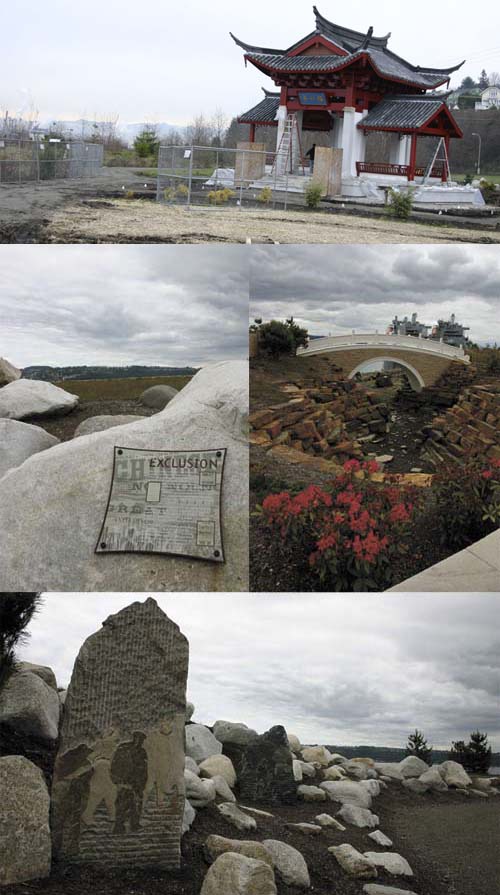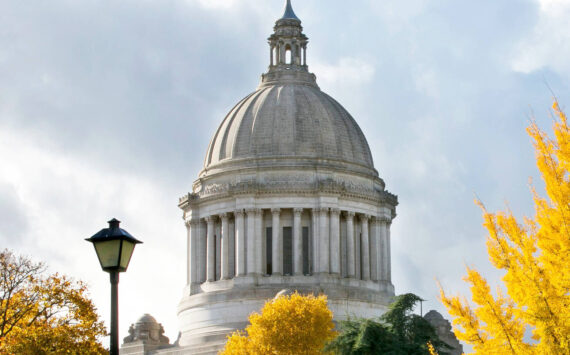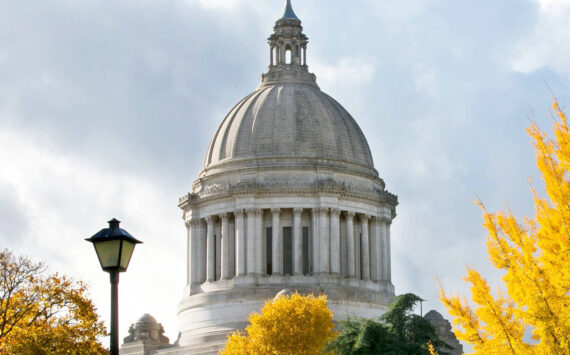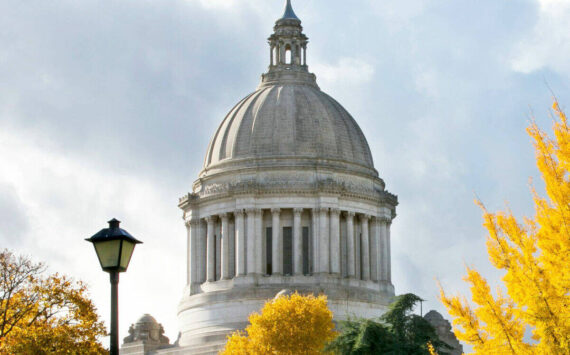A memo prepared by City Hall staff sheds more light on cost overruns related to the Tacoma Chinese Garden and Reconciliation Park. Last week, the Tacoma Daily Index was first to report Tacoma City Council was considering a purchase resolution that would contribute an additional $250,000 to complete a Chinese pavilion, or “Ting,” at the park — which is presently under construction along Schuster Parkway and overlooking Commencement Bay — before delaying its decision to further study the financing (see “City could spend additional $250K for Chinese Reconciliation Park” TDI, Feb. 7, 2011 — and “Decision delayed on additional funds for Chinese Reconciliation Park” TDI, Feb. 11, 2011). Council was expected to vote on the item during its Feb. 8 meeting, but continued the item to its Feb. 15 meeting.
The purchase resolution would bring the total contract amount to $1,256,826.09 plus sales tax — nearly double the original contract with Clements Brothers, Inc., which totaled $656,862.09 and was approved by council on March 3, 2009. The cost overruns are related to the construction of the Ting, which arrived unassembled in Tacoma from Fuzhou, China in September. On Nov. 2, 2010, City Council approved an amendment to the contract that directed an additional $350,000 toward the project; $200,000 from the City’s general fund, and $150,000 from the City’s “Open Space” fund. At that time, City staff said the funds were needed to cover additional costs related to the construction of the Ting.
In a Feb. 10, 2011, memo to City Manager Eric Anderson, Tacoma’s Community and Economic Development Department Ryan Petty and Public Works Director Richard E. McKinley provided an itemized list of the cost overruns leading to this second amendment to the contract:
Ridge beam — $39,200 (original estimate = $0)
Tile roof — $86,700 (original estimate = $4,000)
Stone work — $71,900 (original estimate = $58,100)
Security — $42,900 (original estimate = $9,700)
Materials and equipment — $52,700 (original estimate = $22,200)
Painting — $8,000 (original estimate = $2,800)
Contingency — $45,400
The cost overruns would be paid for by using grant match money originally slated for the SR-509 slip ramp project. “The SR-509 slip ramp project has not received any grant monies and it is not expected to be awarded for several more years,” wrote Petty and McKinley in the memo. “Rather than continuing to earmark these funds for this project, these funds were proposed to be used for the completion of the Ting.”
Petty and McKinley cite a flawed schedule to complete the Ting as a key factor in cost overruns. “During construction of the Ting, it became apparent that the construction schedule provided by the City of Fuzhou was aggressive,” they wrote. “Their schedule assumed that the City’s contractor would work 12 to 15 hours/day, seven days a week and did not take into consideration inclement weather, cultural and communication differences, construction methodologies, weatherization requirements, and building and seismic code requirements. With the exception of the stone column work and the assembly of the timber structure, all major items of work such as the stone masonry, construction of the ridge beams, and the tile roof took longer than originally anticipated and the cost to construct increased respectively.”
Petty and McKinley added: “The Ting was a gift from the City of Fuzhou in recognition of Tacoma constructing the Chinese Reconciliation Park and originally expected to be constructed with craftsmen from China. In the spring of 2010, the City was informed by the City of Fuzhou that they were sending a small delegation of technical advisors and the construction materials necessary to construct the Ting. Tacoma was expected to construct the Ting using City forces. The Ting became an unfunded project. The Public Works Department was asked by the Community and Economic Development Department to manage the construction of the Ting using volunteer labor. Because of risk management and logistical issues, the department was unable to use the volunteers and on Sept. 20, two business days after the Chinese delegation arrived, the Public Works Department instructed Clements Brothers, the contractor that constructed Phase II of the park, to construct the Ting on force account (City paying directly for labor and materials).”
The concerns were first raised in November when the $350,000 amendment reached City Council in November.
“In the original contract, there was an allotted amount of money set aside for assisting with the construction of the Ting,” wrote City Manager Anderson in an Oct. 28 report to City Council. “The amount set aside was completed prior to the City being notified that the delegation from China had been vastly reduced and that no labor would be supplied by the City of Fuzhou. As the talks with Fuzhou have progressed, the City was informed that we needed to supply all of the labor along with some materials and all equipment for the construction of the pavilion. In addition, the previously submitted construction drawings were modified during the prefabrication of the pavilion in the City of Fuzhou.”
When City Council approved the $350,000 amendment during its Nov. 2, 2010 meeting, Rae Bailey with the city’s public works department noted the funding increase involved two components: the relocation of contaminated dirt discovered on-site; and the construction of the Ting.
“When the city of Fuzhou, our sister city, donated the Ting to the city, they were going to supply all of the labor [and] all of the materials to construct the project,” Bailey told councilmembers in November. “Unfortunately, earlier this year, we were informed they were only going to send over a delegation of two to three individuals, and that we were expected to construct the Ting using our own forces. We tried really hard to seek volunteers to construct the Ting. Unfortunately, due to liability issues, due to logistics, we were unable to have our contractor work with the volunteers. So we ended up contracting with Clements brothers, change-ordering this work into their project. So what you’re seeing is all the labor and equipment associated with the erection of the Ting.”
During City Council’s meeting Feb. 8, Councilmember Jake Fey asked Bailey if this would be the last amendment to the contract. “I just thought we had the exact same conversation in November,” said Fey. “Now it is February and I am wondering if we’re going to have another conversation like this in March or April.”
“No. This is it,” said Bailey. “It takes them through everything. What we have left is basically touching up paint [and] we have to install the four beautiful lady benches and then do some landscape restoration. That will complete the project.”
Councilmember Fey also asked about the sources of funding. To date, the City has contributed approximately $1.16 million from the open space fund toward the overall project in order to match grants from the Washington State Recreation and Conservation Office and the State Historical Society. According to Petty and McKinley, the open space fund “was established in the early 1970s for the purpose of acquiring, protecting, managing, and developing open space” and has been used in the past for Wapato Hills, Starr Street Park, and parks on Ruston Way and along Thea Foss Waterway.
“I know this is an important project and a lot of people put their own efforts in, so we wouldn’t want to keep it from going forward,” said Fey. “But we need to be a little more transparent where the money is coming from.”
Councilmembers Ryan Mello and Marty Campbell also had questions about the sources of funding. Campbell made a motion to delay voting on the item until funding questions could be answered by staff.
The waterfront park, which is expected to open in April, aims to commemorate the events of Nov. 3, 1885, when a group that included a Tacoma city councilmember, judge, sheriff, and the mayor forced more than 200 Chinese from their homes and businesses. The park’s development has been guided by the non-profit Chinese Reconciliation Project Foundation. In 2005, more than 100 people gathered for a ceremony to mark the ground-breaking of the $12 million, four-acre park, which is located on land owned by the city and formerly occupied by the National Guard. Today, visitors to the partially-completed park will find a garden, 800-foot-long sea wall, winding foot paths, bridge, public art, interpretive displays, and recreation areas.
On Oct. 30, 2010, park organizers and members of city council and the general public marched 2.5 miles from downtown Tacoma to the waterfront park to commemorate the 125th anniversary of the event. In September 2010, the Tacoma Daily Index was first to report the Ting had arrived in Tacoma (see Pavilion arrives in Tacoma for Chinese Reconciliation Park,” TDI, Sept. 27, 2010 and “From Fuzhou To Tacoma,” TDI Reporter’s Blog, Sept. 27, 2010).
Click to read a copy of the Feb. 10, 2011, memo to City Manager Eric Anderson from Tacoma’s Community and Economic Development Department Ryan Petty and Public Works Director Richard E. McKinley regarding cost overruns leading to this second amendment to the contract.
Earlier Tacoma Daily Index Coverage








